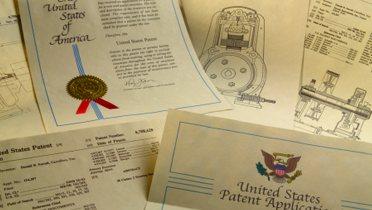Executive Summary
Not long ago, patents were viewed as a subject consigned to specialists with law and a technical background. Now branded as intellectual property, they have moved front and center in an economy dependent on innovation for sustainable growth. Yet as patents have expanded in number, power, and subject matter, they have drawn controversy as well as attention.
Today a unitary, deeply institutionalized legal system confronts an increasingly diverse technological and business environment. High demand, low standards of quality, and the extreme complexity of information have led not only to immense portfolios but to new varieties of strategic behavior. Large investments in product development are put at risk by the leveraging power of individual patents, and networked services and industry standards make especially attract targets because of the embeddedness and breadth of investment. While China has been criticized relentlessly for not respecting intellectual property rights, China now appears to be emulating the high-volume, low-quality U.S. model, but on its own terms.
Innovation is always a risky undertaking. In principle, patents help reduce risk by allowing an inventor a limited period to exclude others from exploiting the invention. However, the patent system can also create risk and uncertainty. Juries are notoriously unpredictable in patent cases, and judges have had difficulty applying the law, including the language of patent claims, with consistency. A lawyer’s opinion on whether a patent is valid may cost $15,000 or more – and another $15,000 or more for an opinion on whether a particular technology infringes the patent – but with no guarantees. But the greatest uncertainty facing innovators comes from the sheer volume of patents, most of which belong to somebody else.
The creation of the Court of Appeals for the Federal Circuit in 1982 was designed to make the patent system more consistent and predictable, at least at the appellate level, where there appeared to be inconsistency among the regional circuits. The Federal Circuit quickly became a champion of its specialty, making patents more powerful, easier to get, harder to attack, and available for a nearly unlimited range of subject matter. Low standards combined with the increased power of patent holders compounded the problem of indeterminacy. Patents grew in number and could be asserted aggressively after others had made huge investments in developing products that happened to infringe.
Controversies over the effects of this “strengthening” of the patent system simmered out of public sight until the Federal Trade Commission (FTC) and the Department of Justice held 24 days of hearings in 2002. In 2003, the FTC issued a landmark report that showed widespread concerns about patent quality and the functioning of the system, especially in information technology. The FTC report and a subsequent report by the National Academies spurred proposals for legislative reform.
Debate on patent reform often divides along the value chain (upstream vs. downstream) and across industries characteristics (complex vs. discrete technologies). Upstream research and design firms want leverage over downstream manufacturers, distributors, and retailers. Companies that assemble and market complex products are especially vulnerable to patents on the many thousands of individual components and functions that make up complex products.
The contrast between discrete and complex technologies is at the root of the so-called “patent paradox.” There are far fewer patents in pharmaceuticals than in information technology, but a single patent can enable huge investments to be made in clinical testing and regulatory approval – and can effectively secure the market value of a billion-dollar drug. Information technology is much more patent-intensive, but because there can be thousands of patentable functions in a very inexpensive product, the value of the technology protected by each individual patent is diluted. Yet individual patents can be valuable if inadvertently infringed, and IT firms have built up massive portfolios of patents for defensive purposes – to counter infringement claims. But “trolls” – or more politely, “patent assertion entities” – do not create products for the market. Undeterred by defensive portfolios or concerns about reputation, they can assert patents with impunity.[1]
[1]
See data collected by Patent Freedom:
https://www.patentfreedom.com/research.html
.
The Brookings Institution is committed to quality, independence, and impact.
We are supported by a diverse array of funders. In line with our values and policies, each Brookings publication represents the sole views of its author(s).




